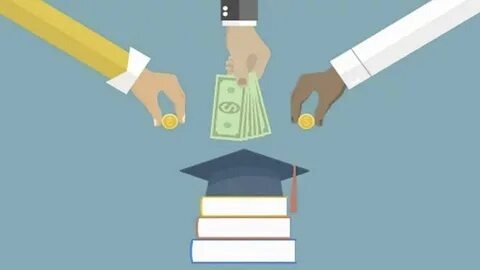Understanding Student Loans: What They Are and How They Work

Strong 8k brings an ultra-HD IPTV experience to your living room and your pocket.
Education is often seen as a gateway to personal growth and career opportunities, but the cost of higher education can be a significant obstacle. This is where student loans come into play, serving as a financial bridge to help students achieve their academic and professional aspirations. For anyone considering higher education, understanding what student loans are and how they function is essential for making informed financial decisions.
What Are Student Loans?
Student loans are financial products designed specifically to help students pay for education-related expenses, including tuition, housing, textbooks, and other costs. Unlike grants or scholarships, which are typically awarded based on merit or need and do not need to be repaid, student loans are borrowed funds that must be repaid with interest over time.
These loans can come from two primary sources: the federal government and private lenders. Federal student loans are provided by the U.S. Department of Education and often offer more favorable terms, such as lower interest rates and flexible repayment plans. Private student loans, on the other hand, are issued by banks, credit unions, or other financial institutions and may have varying terms based on the borrower’s credit history.
Why Student Loans Are Important
Access to education has become increasingly tied to financial capacity. Without student loans, many individuals would be unable to afford the high costs associated with attending college or pursuing advanced degrees. By providing upfront funding, student loans enable students to focus on their studies without the immediate burden of financial strain.
In addition to covering tuition, student loans can also help students manage living expenses, allowing them to fully immerse themselves in their academic environment. For those pursuing specialized or professional degrees, such as medicine, law, or engineering, student loans are often the only viable way to finance education that requires years of study and training.
How Do Student Loans Work?
The process of obtaining and repaying student loans involves several key steps, from application to final repayment. Understanding this lifecycle is crucial for borrowers to manage their financial obligations effectively.
Application and Approval
The journey begins with the application process. For federal loans, students must complete the Free Application for Federal Student Aid (FAFSA), which determines eligibility for federal aid programs. Private student loans, by contrast, typically require a separate application that includes credit checks or co-signer agreements.
Disbursement
Once approved, loan funds are disbursed directly to the educational institution to cover tuition and fees. Any remaining funds are usually provided to the student for other educational expenses.
Interest Accrual
Interest on student loans can either begin accruing immediately or be deferred until after graduation, depending on the loan type. For instance, federal subsidized loans do not accrue interest while the borrower is in school, while unsubsidized loans and most private loans do.
Repayment
Repayment usually begins after a grace period, which is typically six months following graduation or leaving school. Borrowers are required to make monthly payments that include both principal and interest. Federal loans often provide options for income-driven repayment plans, which adjust payments based on the borrower’s income, while private loans may have less flexibility.
Common Types of Student Loans
Federal Student Loans
Federal student loans are generally considered the most accessible and borrower-friendly option. They include Direct Subsidized Loans, Direct Unsubsidized Loans, and PLUS Loans for graduate students and parents. These loans feature fixed interest rates, income-based repayment options, and potential loan forgiveness programs.
Private Student Loans
Private student loans, offered by financial institutions, cater to students who need additional funding beyond what federal loans provide. These loans typically require a credit check and may come with variable or fixed interest rates. While private loans lack federal benefits like income-driven repayment plans, they can be a valuable resource for covering education costs, particularly for those with strong credit profiles or co-signers.
The Importance of Understanding Loan Terms
Before borrowing, students and their families need to understand the terms and conditions of their loans. Key factors to consider include:
- Interest Rates: The percentage charged on the loan principal can significantly impact the total cost of borrowing. Fixed rates remain constant, while variable rates may fluctuate.
- Repayment Terms: The length of the repayment period and available repayment options can affect monthly payments and overall affordability.
- Loan Forgiveness Options: Federal loans may offer forgiveness programs for certain public service roles, while private loans generally do not.
Thoroughly reviewing loan terms ensures that borrowers are prepared to manage their debt responsibly and avoid financial pitfalls.
Student Loans and Career Advancement
For many, student loans are an investment in future earning potential. A degree often translates into higher wages, better job security, and expanded career opportunities. Research consistently shows that college graduates earn significantly more over their lifetimes compared to those with only a high school diploma.
By making education accessible, student loans empower individuals to pursue careers that align with their passions and strengths. For example, aspiring healthcare professionals, educators, and engineers often rely on student loans to complete the extensive training required in their fields. Over time, the return on this investment can far outweigh the initial costs.
Navigating the Challenges
While student loans provide undeniable benefits, they also come with challenges. Rising education costs have led to higher borrowing amounts, and repayment can be a long-term commitment. Borrowers must have a repayment strategy, budget effectively, and explore options like loan consolidation or refinancing if needed.
Private Student Loans
Private student loans can fill funding gaps when federal aid falls short. However, they require careful consideration, as terms can vary widely. Borrowers should compare interest rates, repayment options, and fees to ensure they select a loan that aligns with their financial goals.
Conclusion
Student loans play an essential role in bridging the gap between the cost of education and the financial resources available to students and their families. By providing access to higher education, these loans contribute to personal growth, career success, and economic mobility. However, understanding how student loans work—from application to repayment—is crucial for making informed decisions and minimizing financial stress.
Whether borrowing from federal programs or exploring private student loans, students must evaluate their options carefully and plan for their financial future. With the right approach, student loans can serve as a powerful tool to unlock opportunities and pave the way for success in an increasingly competitive world.
Note: IndiBlogHub features both user-submitted and editorial content. We do not verify third-party contributions. Read our Disclaimer and Privacy Policyfor details.


